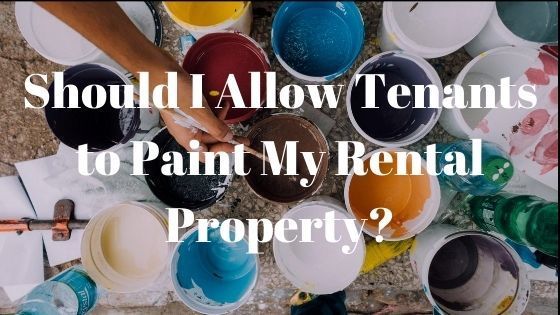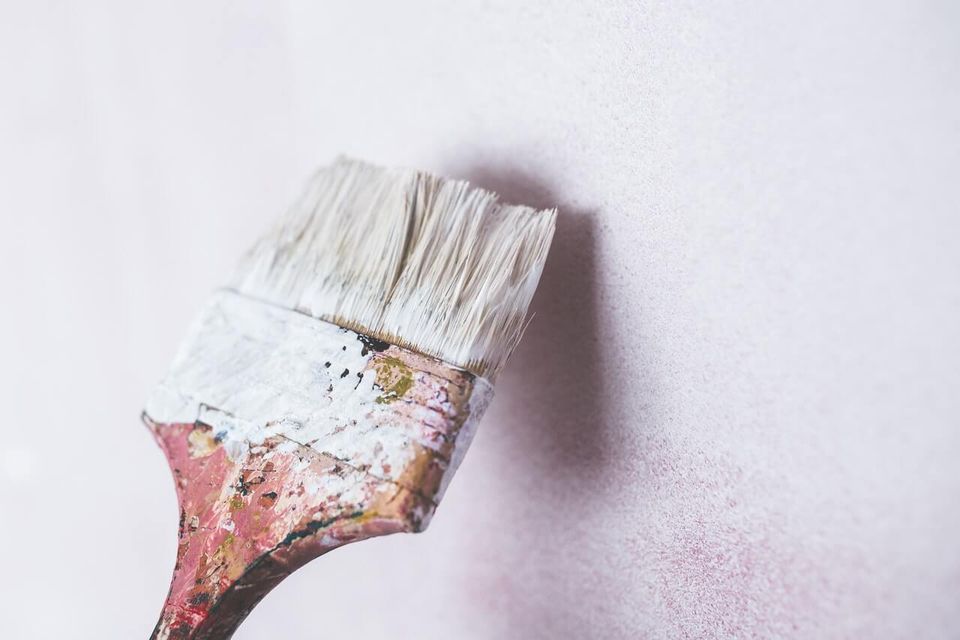Pros & Cons of Allowing Tenants to Paint your Rental Unit
As a property owner, you know that it takes a lot of hard work to maintain a rental property. Not only do you need to maintain your property, but you must keep it attractive for tenants as well.
A great way to keep the property attractive is to maintain the property’s newly painted look. It’s recommended that you paint your property using safe and neutral controls, like white or cream.
However, when a tenant moves in, the tenant might prefer a different color for the property. The tenant might want something new to brighten up their living space or want to add some personality to the property.
Whatever the tenant’s reason, it’s up to you to decide whether or not to allow them to paint.
Allowing your tenant to paint will definitely affect your property so it’s important to make the right decision. You can ask yourself some of these questions to help you decide.
- Do you want your current tenant to stay longer?
- Does your property look attractive and modern as it is?
- Do you have free time to supervise the painting work?
- Does your tenant want to make major changes to your property?
- Will your tenant return the property to its original color upon move out?
You’ll be able to have a better idea on what to choose after answering the questions above. Take time to weigh in all the options before making a decision.
There are several factors you need to consider before allowing your tenant to paint. You should weigh all the pros and cons before deciding.
Pros of Allowing Tenants to Paint
1. Longer Tenancy
If you allow your tenant to paint, your tenant might feel a greater sense of ownership to your property. As a result, it’s highly likely that your tenant will feel more at home and stay longer in your property.
You can also allow your tenant to paint as a form of incentive. For example, if your tenant always pays rent on time and takes care of your property well, giving your tenant the freedom to paint the property might motivate them to stay for another year.
2. You’ll Save Time and Money
If you and your tenant can agree on the color of the new paint, and if your tenant covers for the costs of the painting job, you will save time and money by letting them paint the unit.
3. Attract Future Tenants
Having a newly painted property will attract future tenants when your current tenant moves out. If potential tenants know they are allowed to paint, they might be more willing to rent your property.
Not only will your property look new if it is repainted, its rental value will also increase.
Cons of Allowing Tenants to Paint
1. Sloppy Work
Painting a property can look easy, but it’s best to leave it to professionals. If you allow tenants to paint on their own, the end result might look sloppy. It’s possible that accidental spills occur and end up on the windows and floors.
2. Repaint for Future Tenants
When your current tenant moves out, you usually need to repaint the property back to its original color. This will mean additional work for you because the new paint needs to be primed first and then painted over with the original paint color afterwards.
3. Cause Damage to the Property
If you allow tenants to paint by themselves, the paint might spill over to the hardwood, carpets and cabinets. Unwanted paint on certain places will make your property less attractive.
4. Cause Landlord-Tenant Disputes
Disputes can occur when your tenant suddenly repaints your property without your permission or when your tenant chooses a color that you don’t approve of because it’s too bold or colorful.
Your Various Options
Now that you know the pros and cons of allowing your tenants to paint your rental property, you have various options.
1. Allow Your Tenant to Paint Without Conditions
Choosing this option might help retain your current tenant long-term. Of course, tenants don’t renew their lease just based on the color of the paint. However, you will be able to show that you trust them if you allow them to paint freely. Not to mention, you will be able to strengthen your relationship with them by showing them that you value their preference.
2. Allow Your Tenant to Paint with Conditions
You can show your tenant you’re a flexible landlord by approving their request to paint, but you can put certain conditions in place to protect your property from any damage.
For example, you and your tenant can reach an agreement on the color of paint and you can also request your tenant to hire a professional to repaint the property.
It’s also important to decide at the start who will shoulder the painting job expenses. Aside from this, you can require your tenant to repaint it back to its original color upon move out.
3. Don’t Allow Your Tenant to Paint at All
If you don’t want the risks involved in allowing your tenant to paint, you can politely disapprove their request. Set a meeting with them to explain your reason. It’s possible that you want to protect your property from possible damage, or you may simply want to maintain the property’s clean and neutral look to attract future tenants.
If you choose this option, you can still give your tenant other alternatives to revamp the look of your property:
- Removable wallpaper: You can allow your tenant to use removable wallpaper to personalize their living area or their room. Removable wallpaper is also called “renter’s wallpaper” and can easily be removed when your tenant moves out. It was designed to not leave any residue on your walls.
- Add unique home décor: To help your tenant add personality to the property, you can let them freely change the décor. Encourage your tenant to change the curtains, add unique artwork or indoor plants that they find attractive.
- Change the cabinet hardware: If your tenant wants, you can allow them to change the kitchen and bathroom hardware cabinets temporarily. However, require your tenant to put back the original hardware when they move out.
Bottom Line
As a property owner, it’s important to consider all the pros and cons before allowing your tenant to paint. It’s important to think things through to reach the best decision for your rental property.
The good news is that there are different options for you and your tenant regarding this topic.
For further information, contact Dawson Property Management.










